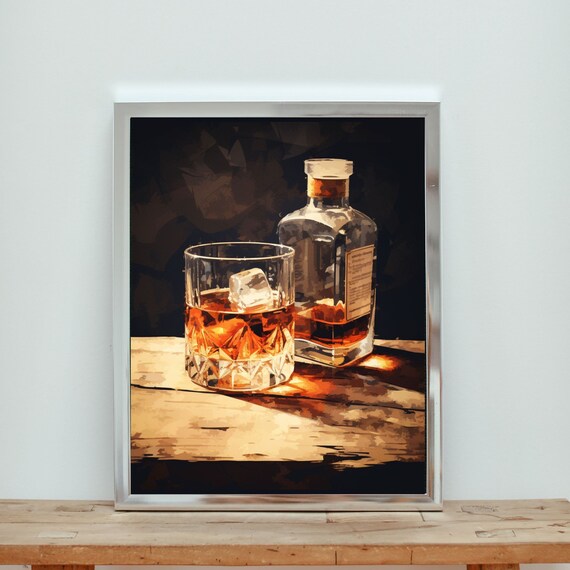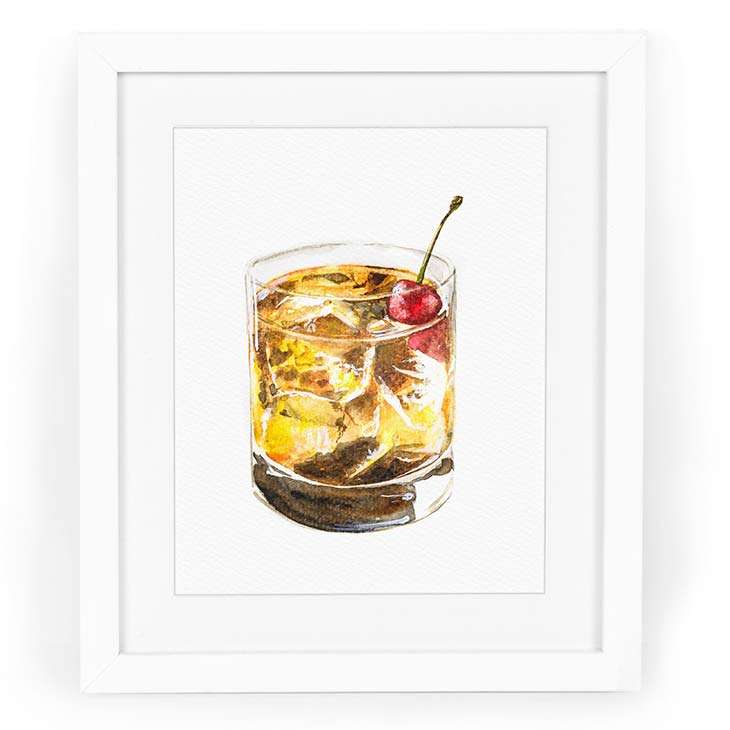Realism Art in the Whiskey Sector: Showing Moments of Distillation
Realism Art in the Whiskey Sector: Showing Moments of Distillation
Blog Article
The Significance of Whiskey Art in Celebrating Heritage and Workmanship in the Beverage Industry
The complex connection in between scotch art and the celebration of heritage and craftsmanship within the drink sector can not be overemphasized. Through attentively created bottles and labels, bourbon brand names encapsulate their historic roots and the artisanal skills that specify their production approaches.
The Historical Origins of Whiskey
At the heart of bourbon's appeal lies an abundant tapestry of historical origins that map back to ancient human beings. The origins of whiskey can be linked to the distillation practices of the Sumerians and Babylonians around 2000 BCE, where very early kinds of fermented grain beverages started to emerge. It was in the Middle Ages that the art of purification advanced dramatically, especially in Ireland and Scotland, leading to the development of bourbon as we recognize it today.
The term "scotch" itself obtains from the Gaelic word "uisce beatha," suggesting "water of life." This expression emphasizes the social value of scotch in Celtic societies, where it was commonly connected with rituals, celebrations, and communal bonding. By the 15th century, purification ended up being an acknowledged craft within monastic communities, leading the method for the establishment of legal distilleries.
As trade courses broadened, scotch's popularity expanded, going beyond regional borders and recording the rate of interest of connoisseurs worldwide. Realism Art. This historical journey shows not only the workmanship behind scotch manufacturing but also its essential duty in social and social contexts, noting it as a substantial drink throughout background
Artistic Expression in Branding
Bourbon branding stands as an engaging crossway of creativity and business, where aesthetic identification plays a critical role in shaping consumer perception. The visual appeals of scotch labels, packaging, and advertising and marketing materials mirror not just the brand's story however also its core worths and heritage. Through artistic expression, distilleries communicate a story that resonates with consumers, evoking feelings and triggering connections.
Using color, typography, and imagery in branding offers to differentiate items in a saturated market. Typical motifs may stimulate a feeling of credibility and craftsmanship, while contemporary layouts can signify advancement and forward-thinking. This tactical creative instructions boosts brand acknowledgment and loyalty, allowing customers to forge an individual partnership with the whiskey they select.
Moreover, imaginative expression in branding usually functions as a party of local heritage. Distilleries frequently include neighborhood symbols or historic references right into their styles, creating a local color that welcomes customers to partake in a broader social experience. Inevitably, the virtuosity behind whiskey branding not just improves aesthetic appeal however likewise enhances the general narrative of the brand name, cultivating a deeper gratitude for the craftsmanship and heritage ingrained in each container.
Craftsmanship in Container Design
The creativity apparent in whiskey branding expands beyond aesthetic identification to encompass the craftsmanship associated with container design. Each bottle works as a vessel not simply for the spirit within, but also for the story it outlines its beginning, custom, and top quality. The design go to my site process requires careful attention to information, as elements such as closure, shape, and product add significantly to the general perception of the whiskey.
Craftsmanship in bottle design entails choosing top quality glass that can enhance the scotch's shade and clearness, while likewise offering a tactile experience you can check here for the consumer. The shape of the container have to be both practical and aesthetically attractive, usually showing the heritage of the brand name. Lots of distilleries go with unique shapes or embossed logo designs that stimulate a sense of credibility and history.
Additionally, the label style and typography play a crucial duty in communicating the brand name's narrative. Realism Art. A well-crafted bottle not just astounds the customer's eye yet additionally enhances the brand's commitment to top quality and practice. By doing this, the workmanship of container design ends up being an essential aspect of the bourbon experience, combining artistry with a profound respect for heritage
Cultural Significance of Scotch Art
Celebrating practice and craftsmanship, the social significance of scotch art transcends plain aesthetic appeals, intertwining with the social and historical narratives of the regions from which it comes from. Each bottle offers as a canvas, showing the distinct tales, mythology, and practices that have formed local whiskey-making practices. The complex layouts typically mirror the heritage of the distillers, integrating signs and themes that reverberate with the culture and values of their communities.

In addition, whiskey art plays an essential role in public celebrations and parties, offering as a concrete web link between people and their shared experiences. By appreciating the creativity in bourbon packaging, consumers grow a deeper understanding and regard for the craft, ultimately enhancing their satisfaction of the beverage itself.
Modern Trends in Whiskey Discussion
In the last few years, the discussion of bourbon has progressed to show modern tastes and fads while still recognizing standard workmanship - Realism Art. Distilleries are significantly concentrating on visual elements that improve the overall drinking experience, bridging the void between heritage and modernity
Cutting-edge container layouts have emerged, often including lasting products and imaginative labels that tell compelling tales. Lots of brands now collaborate with local musicians, instilling their items with distinct visual expressions that reverberate with customers. In addition, limited-edition launches are typically packaged in collectible containers, adding worth and appeal for connoisseurs.
Final Thought
In conclusion, whiskey art offers as an important avenue for expressing the heritage and workmanship intrinsic in the beverage market. Through complex branding, cutting-edge bottle layouts, and culturally considerable imaginative components, scotch brand names properly recognize YOURURL.com their practices and link with customers.


Craftsmanship in container design involves picking top quality glass that can boost the bourbon's color and clarity, while likewise offering a responsive experience for the customer. In this method, the craftsmanship of container style becomes an important aspect of the bourbon experience, merging virtuosity with a profound regard for heritage.
In conclusion, bourbon art serves as a crucial conduit for revealing the heritage and craftsmanship inherent in the drink industry.
Report this page